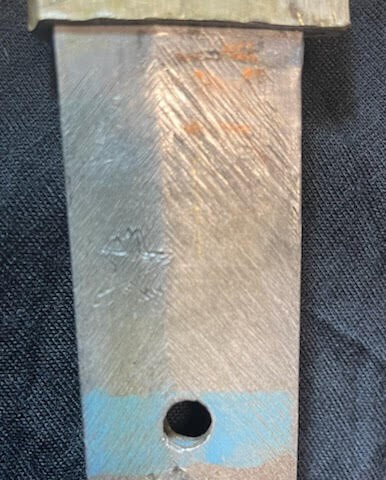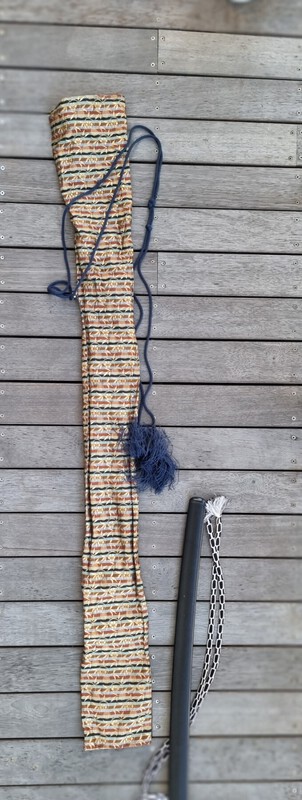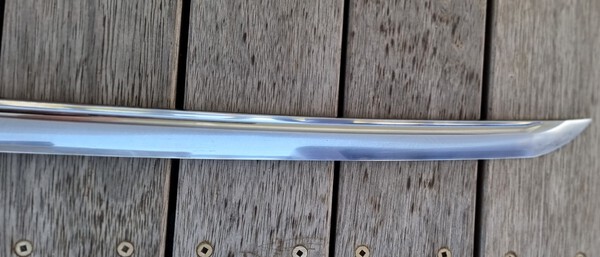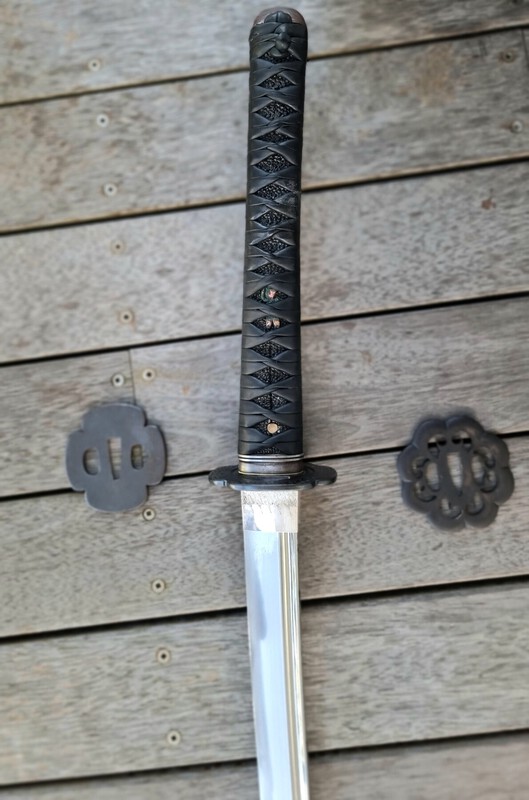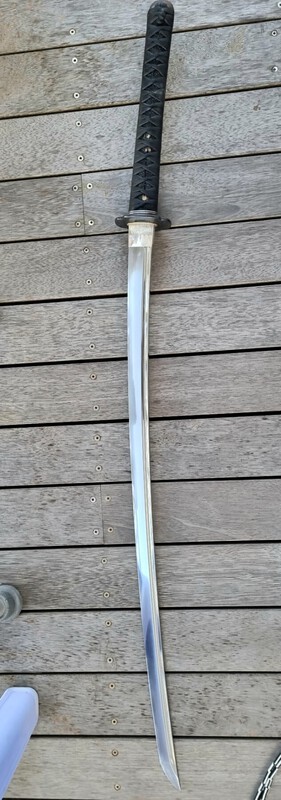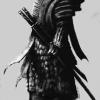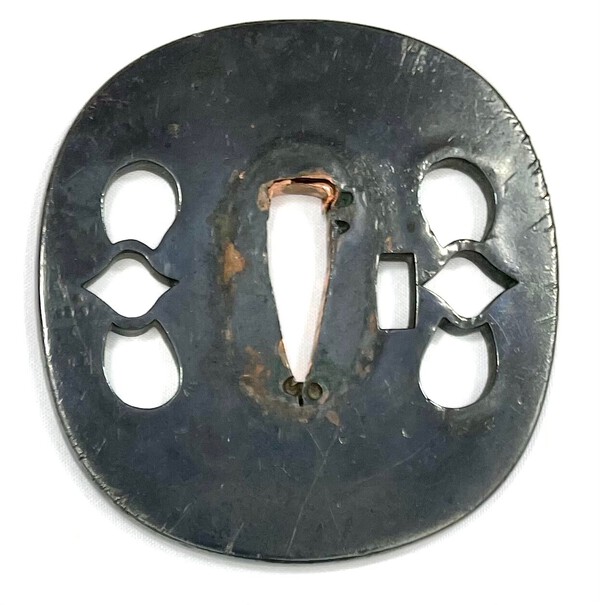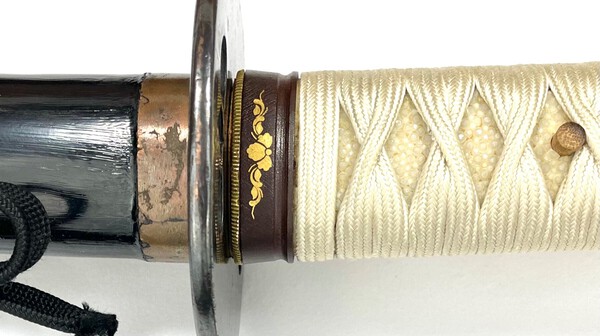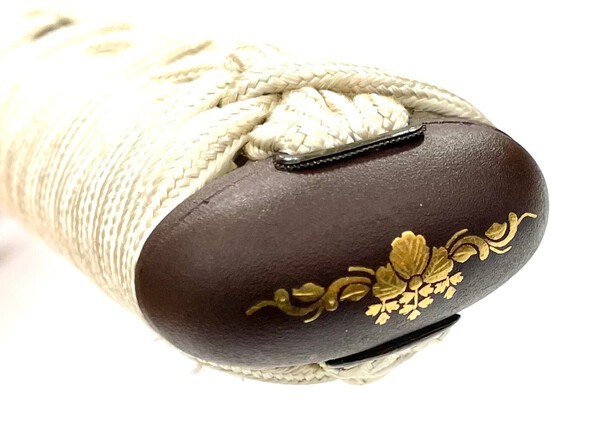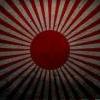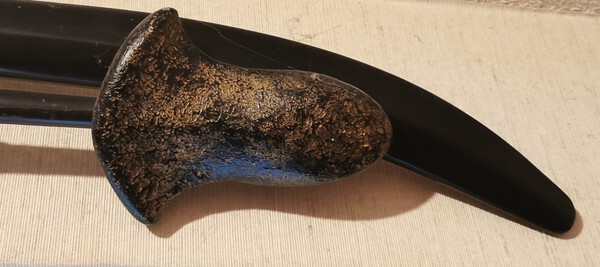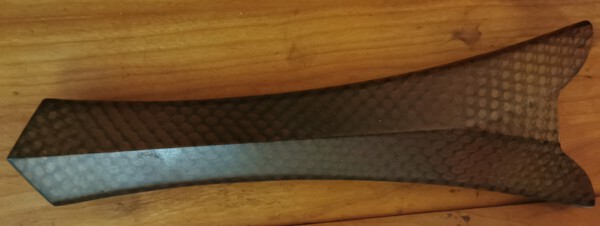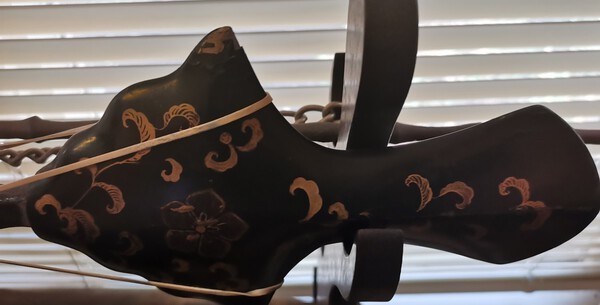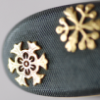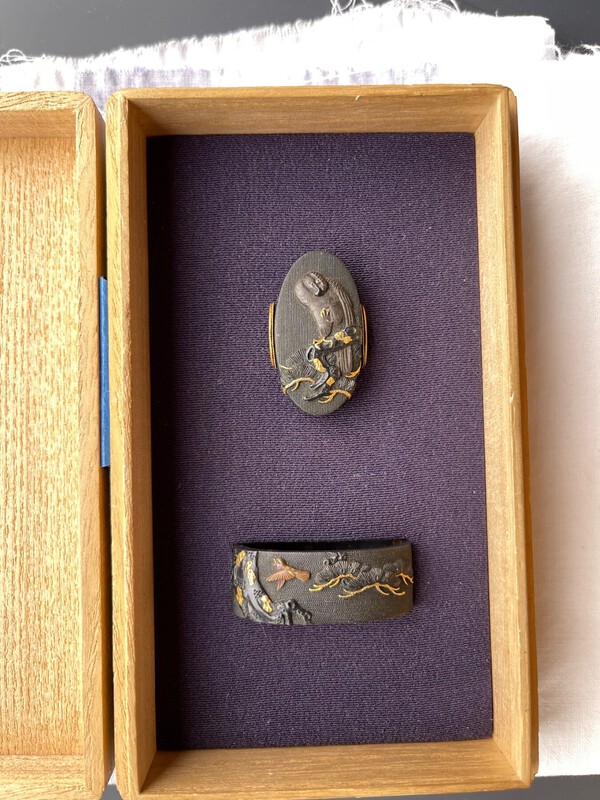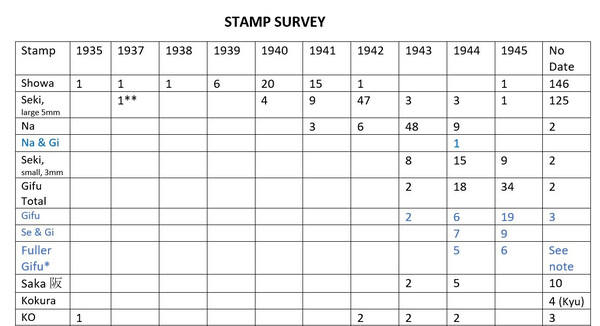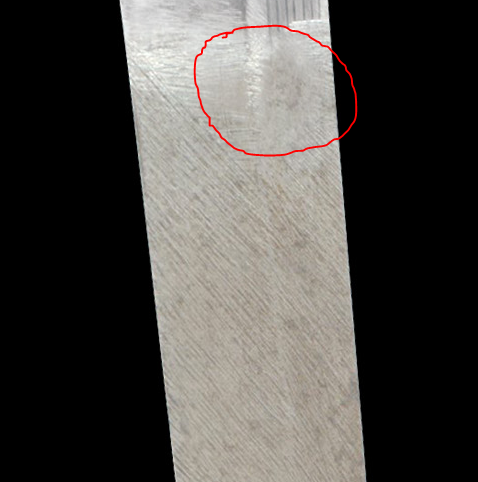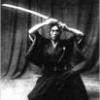Leaderboard
Popular Content
Showing content with the highest reputation on 05/09/2022 in all areas
-
A quick update for all. The process for the first seizure has moved on to the appeals process on border force's decision. This is a much better system and lets you speak to someone with a name for the first time. Basically it is my belief up until this point nothing I could of done would have affected the outcome. Now that I can have a dialogue with someone, things are progressing. I'm still in the middle of this process so I will leave out any information or inferences from it until after I've had a result but I've found some interesting information out that will most likely help people in the future. As a side note I've contacted A curator of Asian Art and had them write me a letter about the items from a place of authority. I would of done this in the UK but I did it from America as it has more weight due to being where the items were sold. (odd I know) This should be enough to swing the balance in my favor but as with everything so far. we will see. By the way, I had to prove I was a member of To-Ken with bank invoices and the date I joined. Like I said I will write a proper update when I get my decision which I'm hoping will be favorable if not then It will go to tribunal. Then I have to decide whether to continue with the court case as this is a separate matter.4 points
-
Bruce, here is one of mine to ponder. RJT smith KANETOSHI with just about every acceptance and arsenal stamp, including a star stamp miss hit 3 times! It is 65cm long, made in 1941, and is extremely well made, including what looks like a Juka-Choji hamon. The stamps are on both sides, and 3 on the mune. Matching assembly numbers on the fittings. It is in original WW2 polish, but every feature is visible.3 points
-
A few years ago when I was still Curator of Oriental Arms and Armour at the Royal Armouries Museum I was contatcted by a Law Officer for HM Customs and Excise with regard to shipments of Chinese, so-called, katana. They had already cottoned on to printing that they were made by 'traditional methods' on the packaging as well as saying 'Made in China'. I made a point that if a certain M.P. had not interfered in the legal wording there would be no problem in stopping the import of Chinese junk but unfortunately the definition decided upon passed into law. In the end it was the claim that they were genuine 'samurai swords' that was their downfall when I pointed out there were no samurai in China. I'm pleased to say the whole container full was seized and destroyed. Ian Bottomley3 points
-
Here are the top 10 smiths that I have personally handled. The first 5 are in the top five. The number in brackets is the number I specifically remember. Norishige (5) Go Yoshihiro (2) Masamune (3) Shintogo Kunihiro (1) Awataguchi Kuniyoshi (2) Awataguchi Hisakuni (1) Hasebe Kunishige (3) Bizen Osafune Nagamitsu (3) Hosho Sadayoshi (1) Shodai Hizen Masahiro (many) I wanted to add an Ichimonji but could not take a smith out of the top 10...3 points
-
Sorry but I strongly disagree with Jimmy's last post. The most likely thing you will learn from buying cheap, out of polish swords and sending them to a polisher for windows and further polish if warranted is that you shouldn't have done it. There is a reason why the swords are cheap and out of polish. Beginners should take serious time for study, and they should resist the urge to buy speculative swords. Save your money for the day when you understand what you're spending it on. There will always be good Nihonto for sale; no need to be in a hurry. Grey3 points
-
Connoisseur’s is very good at teaching high level info about schools and smiths. It is best for grasping periods, period changes, broader schools dynamics, etc. It is a great volume but as you get into more obscure or second and third-tier smiths, you need something more comprehensive like Koza (many volumes) by Kanzan or Markus’s Swordsmiths…2 points
-
Well, I would want to do it like Barry - and blades which I have actually held in my hands and been able to study, and which have really impressed me. This is of course completely subjective, because of course my personal taste and preferences play a role. And as I said, it is about certain blades (signed, or with attribution), which have remained in my memory and which I would also like to name spontaneously, without thinking twice. Shintogo Kunimitsu Rai Kunimitsu Unji Kamakura Sukezane Shizu Kaneuji Nanki Shigekuni Dewa Daijo Kunimichi Yasutsugu Nidai Shume Kami Yasuyo Kiyomaro2 points
-
It is very very difficult. I have been trying to figure out and I must admit I am not even close to "top 10", as I feel I am not qualified to judge their merits... However I tried to do lists for smiths for whom I have found at least 20+ verified signed examples, but reducing that to top 10 of my liking was also impossible for me... I had to do two lists one for Bizen and one for all, and I only focused on pre-Muromachi smiths. Also I combined some "similarish" smith entries and of course left out some super famous ones as I don't have 20+ signed items for them. All Awataguchi Yoshimitsu (粟田口吉光) Ayanokōji Sadatoshi (綾小路定利) Rai KuniX smiths from middle Kamakura to Nanbokuchō (来XX) Shintōgo Kunimitsu (新藤五国光) Hasebe Kunishige (長谷部国重) Sōshū Hiromasa & Akihiro (広正 & 秋広) Norishige (則重) Ko-Aoe Masatsune (正恒) Ko-Hoki Yasutsuna (安綱) Samonji & Sa Yasuyoshi (左 & 安吉) Bungo Yukihira (豊後行平) Bizen Ko-Bizen Masatsune (正恒) Ko-Bizen Tomonari (友成) Fukuoka Ichimonji Yoshifusa (吉房) Kamakura Ichimonji Sukezane (助真) Bizen Saburō Kunimune (備前三郎国宗) Moriie (守家) Nagamitsu (長光) Kagemitsu (景光) Kanemitsu (兼光) Chōgi (長義)2 points
-
Ko-hoki Yasatsuna Yamshiro Sanjo Ko-Bizen Tomonari Bizen Saburo Kunimune Rai Kuniyuki Bizen Osafune Chogi (Nagayoshi) Hasabe (any Hasabe from the Nanbokucho) Horikawa Kunihiro Hizen Tadayoshi Kiyomaro Gassan Sadakazu Gassan Sadatoshi2 points
-
Hello people I've had this shinsakuto since 2010. It is made by Okamoto Kazumune in seki. I bought it directly off him when I was in Japan all those years ago. It comes with perfect leather wrap 11.5 inch tsuka and 31.5 inch Nagasa or 80cm from habaki notch to tip. Originally I had it made without bohi but decided to get a bohi installed as it was becoming way too heavy for me. Now it weighs 1213 grams with koshirae without saya. The sori changed a 1mm or so after installing the bohi. Saya has a same wrap at the first 6 inches or so. It is in iaido/tameshigiri polish and has been used in cutting tatami and beach mats, which is why there is a very slight tweak in the blade , hard to picture the tweak. A professional sword polisher or practitioner would be able to fix it easily . Still can be used as is. Because the bohi changed slightly after getting the bohi carved the blade at the last inch or so is very slightly tighter to go in the saya. Motobaha :34mm sakihaba 24mm Sori 17-19mm motokasane 8mm Sakikasane 5.1mm Asking price is pretty much what the bohi cost me. Included is 2 spare tsuba and brocade bag. $3000aud Any questions just ask or email me on jezah81@gmail.com1 point
-
2022年度 NBTHK Shinsa Dates And New Procedure for Shinsa Submission Greetings sword friends! I thought it worthwhile to post an update regarding NBTHK shinsa procedures as they have evolved a bit. Mostly, it is about advanced preparation to be eligible to submit items into shinsa. Previously, you could just show up on the days for shinsa submission and drop off the items. Now it requires pre-registration! See below! I previously made this announcement on my new Keichodo Fine Samurai Art Facebook group (check it out), but will continue to make announcements for the NMB as well. NBTHK new requirements: Items for shinsa submission must be pre-registered during the month preceding shinsa. If you fill out shinsa forms by hand, these have to be submitted prior to the 10th day of the month preceding shinsa. If you fill out the forms on-line, these have to be submitted prior to the 25th of the preceding month. April Tokubetsu Juyo 27th shinsa (submission days for items April 4-6) May Hozon/Tokubetsu Hozon fittings (submission days for items May 9-11) June Hozon/Tokubetsu Hozon swords (submission days for items June 1-3) August Hozon/Tokubetsu Hozon fittings (submission days for items Aug. 1-3) September Hozon/Tokubetsu Hozon swords (submission days for items Sept. 5-7) October Juyo Shinsa (68th) (submission dates Oct. 3-5) November Hozon/Tokubetsu Hozon fittings (submission days for items Nov. 7-9) December Hozon/Tokubetsu Hozon swords (submission days for items Dec. 5-7) February Hozon/Tokubetsu Hozon fittings (submission days for items Feb. 1-3) March Hozon/Tokubetsu Hozon swords (submission days for items March 1-3)1 point
-
Katana in Koshirae and Shirasaya. Complete. Age: Blade: Middle to late Muromachi period (ca. 1500) Koshirae: Edo period Mei: Mumei, probably Uda school Size: Nagasa: 70.2 cm Nakago: 17 cm Sori: 2.5 cm Motohaba: 3.6 cm Motokasane: 7.5 mm Koshirae: 106 cm Provenance: NBTHK hozon (blade) NBTHK kicho token (blade) NBTHK kicho token (Tsuba) Additional photos and info upon request. Excellent condition. $2,000 + shipping (from Ohio)1 point
-
Completely legitimate. I would look for a nicer example though, unless you want one which was repainted at some time for some reason (we can guess, but have no idea really). A great example is not hard to find, there have been a few listed recently.1 point
-
1 point
-
1 point
-
RADEN in Japanese. Looks like a MEIJI tourist KOSHIRAE. It is ABALONE (Haliotis or PAUA snail).1 point
-
1 point
-
This is likely to be the key piece of evidence. Hopefully this will be enough to have them release it, but if not I'm sure it'll be very valuable in court. In my (limited) experience, these people are quite readily persuaded by expert opinions given from a position of authority (which they recognise as valid).1 point
-
@Shamsy @Stegel may correct me, but this one is legit! I would even love to see if the paint is war-era or new. It has both the gold and red colors that seem to have significance. We are starting to believe that some of these painted gunto were done by the soldiers themselves. An interesting piece.1 point
-
Kindle books have some solid DRM to prevent copyright infringement, so you can't do much without removing the copy protection. There's a free piece of software available from Amazon called Kindle Create which allows authors to quickly and easily convert documents into properly formatted e-books and publish them on Amazon. It takes under an hour to go from a word document to a published e-book. If Yurie's contract with Alpha allows for this, it would be best to re-publish the e-book this way. I could do the work in Kindle Create for her (obviously at no charge) and send her the files, but she'd need to publish it from her account.1 point
-
To add to the list rule breakers is the metal Saya, which almost invariably contain Showato in RS mounts.1 point
-
Just think of all the lives saved by not allowing people to own cheap swords. There could have been anarchy. It's a good thing that HMCE was able to save the public from itself and now everyone is safe. God only knows what could have happened if that container had made it to the open market. I know that cheap swords and knives are a gateway weapon, leading to even uglier and more dangerous pointy stuff later in life. Just look at places like Iraq and Afghanistan and Sudan etc..where youngsters are exposed to edged weapons from a young age, and the massacres that ensue. Next is to remove all access to poor quality chef's knives. We all know that it leads to poor cooking skills and just unpalatable food. Ian, I think you guys probably have to keep constant tabs on the staff working in the various museum armories in case the access to these starts to degrade their sanity. Brian On a particularly skeptical Monday1 point
-
That I will do, the tsuka is tightly stuck on, as I've shimmed it especially for iaido use. If a potential buyer is serious about buying I will definitely post pictures of the nakago. But I'd rather not disturb the tight fit right now until someone is interested.1 point
-
1 point
-
Matt, It would be best to first decide which style of koshirae you're going for. If you already have tosogu then their era, school, level of opulence, etc will help you determine the appropriate style of koshirae and thereby the reasonable options for the saya. An overall koshirae can turn out quite poorly if you focus myopically on individual component parts. A reference book with lots of examples would be the best place to go for inspiration, but you'll see a few examples here: https://www.nihonto.com/uchigatana-koshirae/ https://markussesko.com/2014/10/ Here's some specific examples I'm sure you'll enjoy: https://yuhindo.com/goto-mitsunobu-yokoya-nobusada-daisho/ https://yuhindo.com/hoshizukiyo-kencho/ https://yuhindo.com/mutsu-no-kami-tadayoshi/ https://yuhindo.com/hatakeda-moriie/ https://yuhindo.com/rai-kunitoshi-4/ https://yuhindo.com/imagawa-shizu-meito/ https://yuhindo.com/kanemoto-katana/ https://yuhindo.com/ko-yamashiro-gojo-tachi/ https://yuhindo.com/awataguchi-yoshimitsu/ https://yuhindo.com/samonji/1 point
-
OK, that's reasonable. Given that, and without any further definition of "Top 10", here's some (with plenty of my opinions included :-) ): - Various Mishina-ke, such as the obvious Tanba Yoshimichi. Why? Because I like the flamboyant hamon style, and I used to own a couple from the Mishina group. - Hirokiyo (an obscure Kashuu smith, aka GEN32). Why? Because I have one, and it's always been my fav older blade, even though it's in rough condition. Perhaps my point here is that if I were still actively collecting, I would NOT care about what someone else thinks is a highly-rated smith. I WOULD highly value a specific blade with an interesting provenance (without regard to who made it), because I love the history aspect. If I could buy any blade I wanted, my choice would be one with a clear provenance to a famous historical figure (for example Sakamoto Ryoma). Smith rankings feels mostly irrelevant to me, other than the impact it has on resale value. Similar to folks that feel the need to "paper" their blades, even though they will learn little or nothing from the Kanteisho. Pete1 point
-
I wasn't planning on it, it has always served as a display piece and nothing more. I luckily have healthy respect towards weaponry and as such I wouldn't want to use it for anything else either without at least studying proper handling techniques and the likes first, even if it was a real sword1 point
-
Mostly correct, however no....non-traditionally made swords are not supposed to be registered. They are supposed to be destroyed. And some stamps prove non-traditional. But lack of stamps does NOT make it a Gendaito. In fact most unstamped swords are likely mass produced when made during the war. Yes, people with "contacts" or favours get swords registered that shouldn't be. That happens .1 point
-
1 point
-
Sorry, as you appear to have known, it is a Chinese copy of a Japanese sword. I think that the mei is gibberish.1 point
-
1 point
-
Yes, this is a tough question. Some will just say to start with Masamune and the Jutetsu and your list is full. Others will focus on Gotoba and very early makers. Yet others might pick a few of the best/most famous koto makers and then some of the very best who were founders and leading teachers of the shinto and shinshinto movements. I would try to be in the latter camp.1 point
-
IMO, It's so subjective and biased, I don't know how it could have any meaning. Your term "Top 10" needs a careful definition of what it means. And of course, the 'bias' part is rooted mostly in money, status, and politics. I would suggest modifying the question to something like "highest $$-value smiths based on actual sales over the last XX years". It's still pointless, but at least it might be measurable. Pete1 point
-
Hi Xander! I have a full discussion of this in the first chapter of Stamps of the Japanese Sword. Concerning showato in Japan, as I understand the current laws, they allow people to register swords regardless of whether they are traditional or not. The premise being someone just bought a house and "found" this sword in the attic rafters. It seems they are being "found" more frequently lately! Ha! And at the same time, like Bruno pointed out, the culture is beginning to recognize the historical value of them. Stamping - not all swords got inspected, and not all swords got stamped. In the hundreds of swords examined by Richard Fuller, Mal Cox, and myself, half have no stamps at all, yet many of them were likely non-traditionally made. To my knowledge, there have been no documents found requiring the stamping of blades of either kind, nor requiring the military to stamp blades. We do have regulation info showing the inspector stamps of the various arsenals, so this would IMPLY that they were required to do some stamping, but we still do not have proof that the stamping was done simply as an acceptance process or to indicate a blade was non-traditional. The Showa and Seki stamps are still a bit of a mystery. The only actual written evidence we have comes from the Seki City website, that describes the early years of showato manufacturing. The high demand for swords caused the industry to really ramp-up rapidly. There were forges making some really crappy showato, which bothered the dealers. So, the dealers requested the Seki Cutlery Manufacturers Association to inspect blades for quality. They complied and acceptable blades were stamped. The website does not say what the stamp looked like. It would be easy to say the "Seki" stamp was the one they used, and it may turn out to be true, but I'm bothered by the fact that we don't have any observed Seki stamps prior to 1940, and the majority of them are seen in 1942 - well beyond the surge in sword production created by the Army's demands of the China incursion of the mid-late '30s. While, in fact, we see the "Showa" stamp as early as 1935, peaking in 1940 and tapering off as the "Seki" stamp takes over. My personal opinion is that the Assoc. used them both, starting with the Showa stamp and replacing it with the Seki stamp, reasons unknown. Ohmura, in researching Seki production and stamping, found a document stating half the swords were not stamped because "traditional swords were not part of that tally". Once the Army assumed control of blade production, around 1942, stamping changed to predominantly area/arsenal stamps, but like I said, we have no documented reasons for the stamping practice. I believe, now, that they were simply acceptance stamps. Gendaito made for the military were often RJT and received the star, or Yasukuni/Minatagawa blades; or were sold privately. Were there some gendaito that received other stamps? There are one or two rare examples of Showa stamped blades that were papered, but I'm not aware of any others. Ah. So I got to rambling! There were many showato made before the stamping process was in full swing. I believe many of the non-dated blades were made early in the war, say 1935-1940, and never went through an inspection process involving stamps.1 point
-
Since more and more torokusho and even NBTHK Hozon papers (Mantetsu-to) are issued to non-tamahagane swords , the least is we can see them for sale by Japanese dealers. There must be some flexibily in the rule abviously...Times are changing. I dare to add that without stamp and a good keisho polish, it is not so easy to spot a non- tamahagane sword imho.1 point
-
I have seen several swords that have had the stamps neatly removed, some of them so well done it took very close examination to see it. Steve1 point
-
1 point
-
Don't forget, what we call Showato, the Japanese call Gunto. What we call Gendaito, the Japanese call Showato.1 point
-
Personally interested in responses to this inquiry as I have a smith signed gunto with no Seki or Showa stamp that I suspect may be non-tamahagane.1 point
-
I would say that runs counter to what most experienced collectors here on the board would say. If they're unpolished, then there's not much to study most of the time. You can learn more from a relatively decent in-polish blade than a half dozen out-of-polish blades. Start with books, then blades is the conventional advice.1 point
-
Hi Bruce yes its the number of the photo from it's NTHK Paper.. George There are various theories about the two cutting test's 38 years apart.... fairly rare! This blade is extremly healthy and also has a little ubu-Ha1 point
-
If this is of any assistance, here are the three volumes of the Bunka Bukan 文化武鑑. 巻之1-3 It will be hard going to plough through it. https://archive.wul.waseda.ac.jp/kosho/bunko06/bunko06_01736/bunko06_01736_0001/bunko06_01736_0001.html?fbclid=IwAR0vC2v7ZSMNqi_Lu3FffF8s1OAVXerl7IjRNYu28py0-lbBfVKUlOjM9IY https://archive.wul.waseda.ac.jp/kosho/bunko06/bunko06_01736/bunko06_01736_0002/bunko06_01736_0002.html?fbclid=IwAR3Po5-JTglMRP-mk84How6ewp27egETHHXe5IC2vD_YVPLPinjfrmL-504 https://archive.wul.waseda.ac.jp/kosho/bunko06/bunko06_01736/bunko06_01736_0003/bunko06_01736_0003.html?fbclid=IwAR1FnoNwekBxsqBuX_i6fQ12BuzyrjVB3pMGIK1tX0j5dsVc5IrUL10jdUk1 point
-
Meibun, (signature) Mutsu Daijo Miyoshi Nagamichi Toshiro ( the first cutting test On a day in the second month of kowa 2 (1802) (The blade was tested) by cutting through the armpits (o- wakige) by Mr. Ito second test: By Mr. Yuda Takenao on 21st day in the third month 11 the year of the rat,(1840) by cutting through the armpits (o-wakige)1 point
-
Greatly shorten something - or other that's 500years old, looking at the Nakago. Nakago appears by "photos" not in great shape. Other than that, looks like you received what you paid for.1 point
-
With thanks to the To-Ken committee members and JJ in particular! https://to-ken.uk/resources/legal-and-import.html1 point
-
Here is one on Andy's site that has a kirikomi with a piece of the sword left in the defenders blade. http://www.nihonto.us/NOBUKUNI%20KATANA.htm1 point
-
Thanks for all the replies! Looks like what I thought to be a simple concept turns out to be ambiguous and complicated once again.0 points
-
0 points
-
0 points
-
There's also the all round learning curve, buy a few unpolished swords for very cheap, let's then look at identifying the ones with the best shape, worthiness of further polish, send them to a polisher for a window, identify which ones warrant more extensive full polish, identify which might be worth papering, send them for papers, see what they (NBTHK, or other) say. Whilst this is all going on delve into books along the way because the process described can run parallel to books and reading. Once you have the papered swords back enjoy them and then sell everything and begin again from a new benchmark with more knowledge. There you go, decades of wisdom in a post. You're welcome @Morelp340 points












